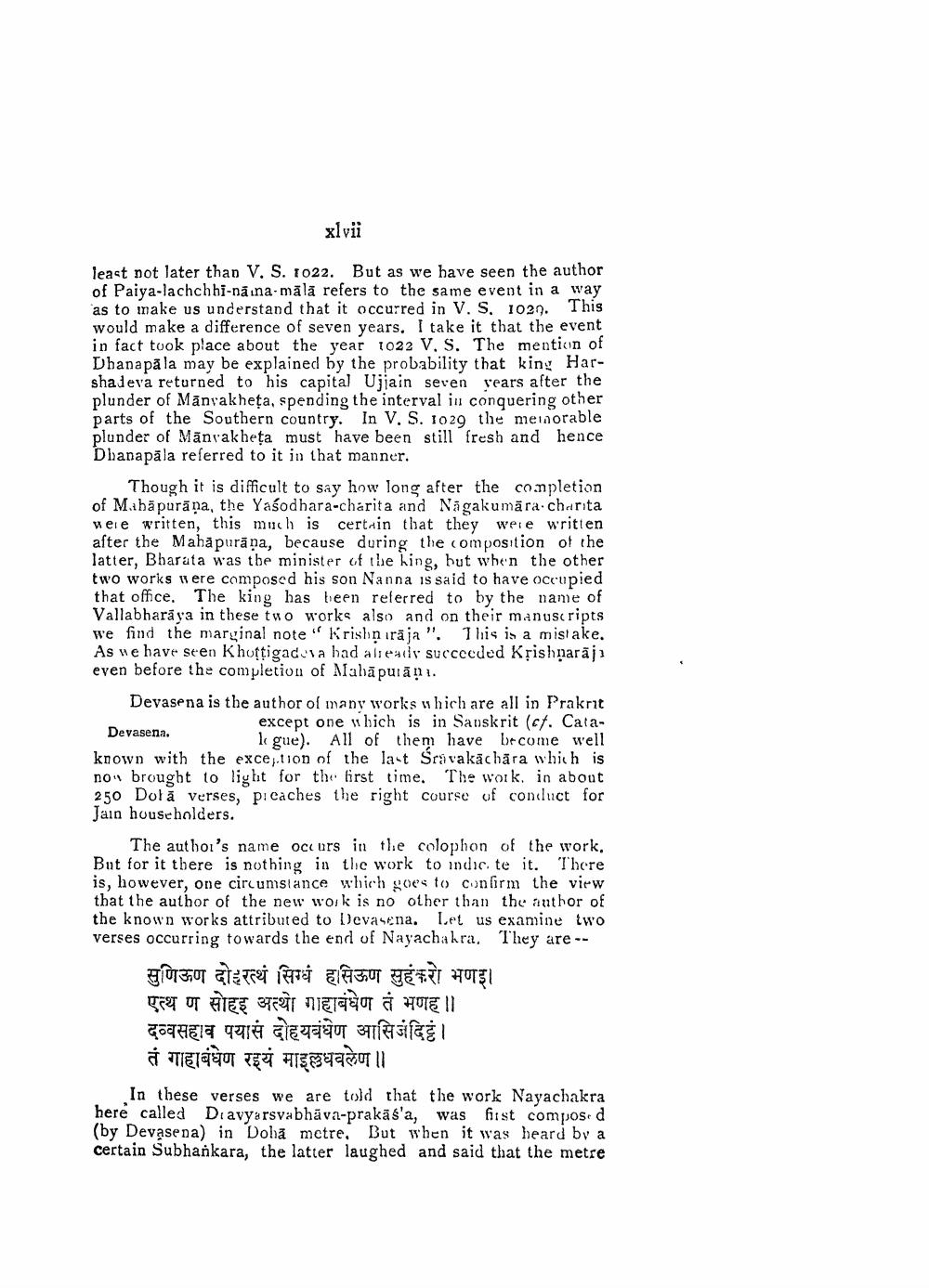________________
xlvii
least not later than V. S. 1022. But as we have seen the author of Paiya-lachchhi-nana-māla refers to the same event in a way as to make us understand that it occurred in V. S. 1020. This would make a difference of seven years. I take it that the event in fact took place about the year 1022 V. S. The mention of Dhanapala may be explained by the probability that king Harshadeva returned to his capital Ujjain seven years after the plunder of Manvakheta, spending the interval in conquering other parts of the Southern country. In V. S. 1029 the memorable plunder of Mänvakheta must have been still fresh and hence Dhanapala referred to it in that manner.
Though it is difficult to say how long after the completion of Mahapurana, the Yasodhara-charita and Nagakumara-charita were written, this much is certain that they were written after the Mahapurana, because during the composition of the latter, Bharata was the minister of the king, but when the other two works were composed his son Nanna is said to have occupied that office. The king has been referred to by the name of Vallabharaya in these two works also and on their manuscripts we find the marginal note "Krishnaraja ". This is a mistake. As we have seen Khuttigadeva had already succeeded Krishnaraj even before the completion of Mahapuran.
Devasena.
Devasena is the author of many works which are all in Prakrit except one which is in Sanskrit (cf. CataI gue). All of them have become well known with the exception of the last Śravakachara which is no brought to light for the first time. The work. in about 250 Dota verses, preaches the right course of conduct for Jain householders.
The author's name occurs in the colophon of the work. But for it there is nothing in the work to indic. te it. There is, however, one circumstance which goes to confirm the view that the author of the new work is no other than the author of the known works attributed to Devasena. Let us examine two verses occurring towards the end of Nayachakra. They are-
सुणिकण दोडरस्थं सिम्बं हसिऊण सुहं भणड़। एत्थ ण सोहइ त्यो गाहाबंघेण तं भणह || दव्यसहाव पयासं दोहयवंधण आसिजंदिनं । तं गहाण रइयं मालधवलेण ॥
||
In these verses we are told that the work Nayachakra here called Dravyarsvabhava-prakäs'a, was first compose d (by Devasena) in Doha metre. But when it was heard by a certain Subhankara, the latter laughed and said that the metre




